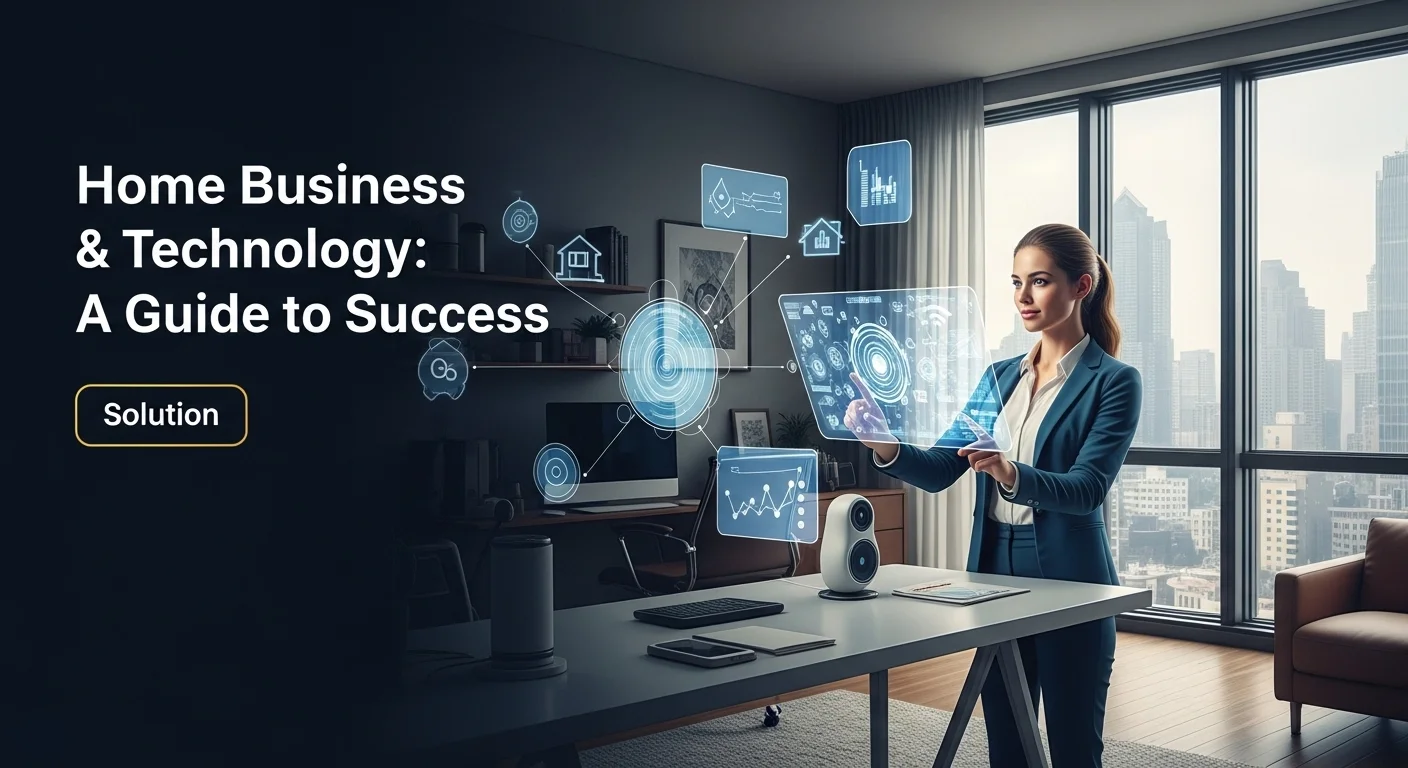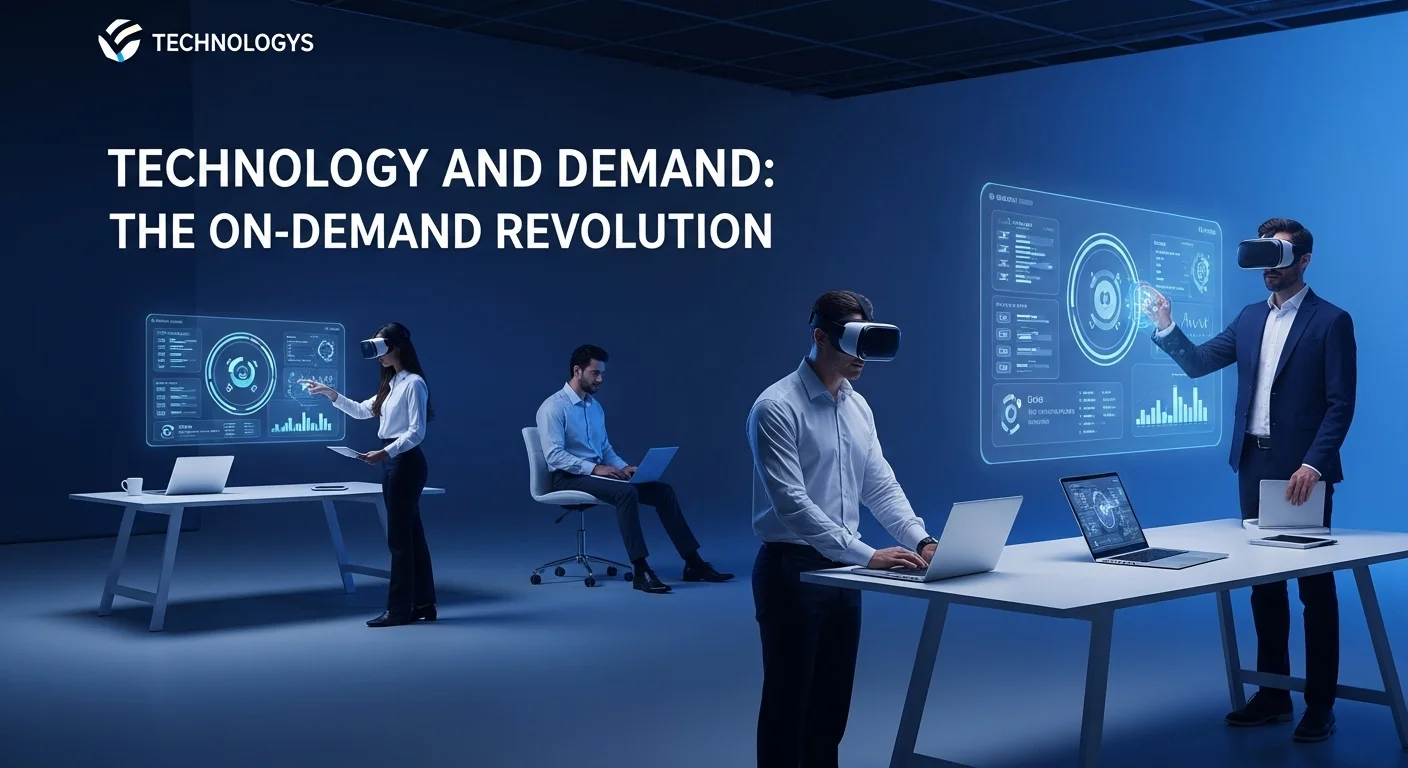Cloud Iaas: A Deep Dive into the Technology
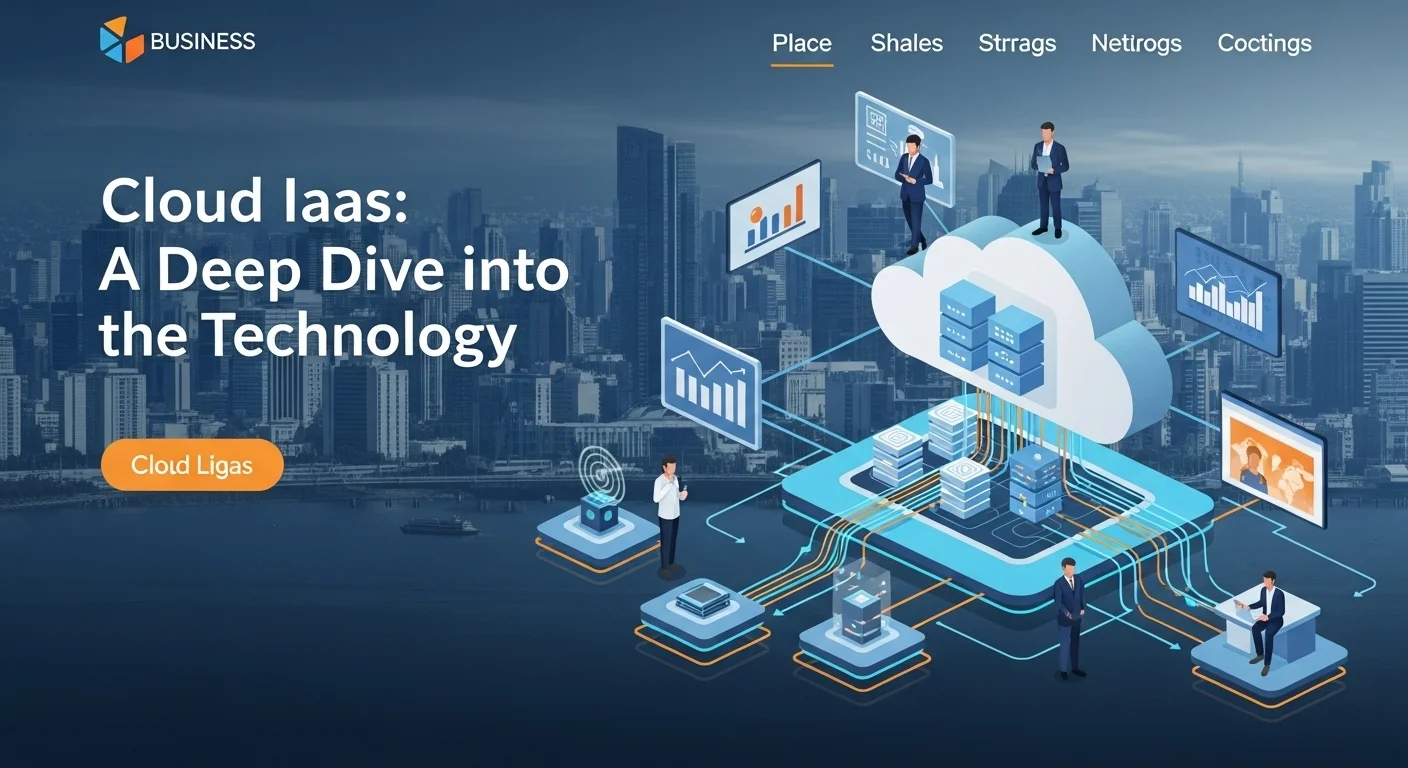
Executive Summary
Infrastructure as a Service (IaaS) is a foundational pillar of modern cloud computing, offering businesses unparalleled flexibility and scalability. This article provides a comprehensive exploration of Cloud IaaS technology, demystifying its core concepts and highlighting its critical importance in today's digital-first world. We delve into the fundamental components of IaaS—compute, storage, and networking—and explain how they empower organizations to move away from costly on-premises hardware to a more agile, pay-as-you-go model. [14] By examining the offerings of major providers, including a detailed look at Google Cloud IaaS and Oracle Cloud IaaS, we uncover the specific benefits and use cases that drive business innovation. For tech enthusiasts and business leaders alike, understanding the nuances of IaaS is no longer optional. It's a strategic imperative for fostering agility, optimizing costs, and maintaining a competitive edge in an ever-evolving technological landscape. This guide will equip you with the knowledge to navigate the world of IaaS and leverage its power for transformative growth.
Table of Contents
What is Cloud Iaas and why is it important in Technology?
In the relentless evolution of digital technology, businesses are constantly seeking more agile, scalable, and cost-effective ways to manage their IT infrastructure. The traditional model of purchasing, housing, and maintaining physical servers and hardware is rapidly becoming a relic of the past. [14] This paradigm shift is largely driven by the rise of cloud computing, and at its very core lies Infrastructure as a Service, or IaaS. Cloud IaaS is a technology that has fundamentally reshaped how organizations of all sizes approach their operational backbone, providing the essential building blocks for innovation and growth. [13] But what exactly is IaaS, and why has it become such an indispensable component of modern technology strategy?
At its simplest, IaaS is a cloud computing model where a third-party provider hosts and manages the fundamental infrastructure components traditionally found in an on-premises data center. [1, 4] This includes servers, storage, and networking hardware, all delivered to the customer over the internet on a pay-as-you-go basis. [3, 14] Think of it like renting the land and utilities to build your house. The provider gives you the plot (servers), the plumbing (networking), and the foundation (storage), but you have the freedom to build whatever kind of house (applications, operating systems) you want on top of it. This gives you maximum control and flexibility without the immense capital expenditure (CapEx) and ongoing maintenance costs associated with owning the land and utilities yourself. [1, 6] The responsibility of the provider is to ensure the physical security and availability of these resources, while the customer manages the software layers above, including operating systems, middleware, and applications. [1]
Understanding the Cloud Service Models: IaaS vs. PaaS vs. SaaS
To fully appreciate the role of IaaS, it's crucial to understand its place within the broader spectrum of cloud services. Cloud computing is generally broken down into three main models: IaaS, PaaS (Platform as a Service), and SaaS (Software as a Service). [2, 16] The key differentiator between them is the level of management and control relinquished to the cloud provider. [2, 28]
- Infrastructure as a Service (IaaS): As we've discussed, IaaS provides the foundational infrastructure. You manage the applications, data, runtime, middleware, and operating system. The provider manages the virtualization, servers, storage, and networking. [16] Examples of IaaS include Amazon Web Services (AWS) EC2, Google Cloud IaaS (specifically Google Compute Engine), and Oracle Cloud IaaS. [1, 28]
- Platform as a Service (PaaS): PaaS builds upon IaaS. The provider manages the infrastructure *and* the runtime environment, including the operating system and middleware. [28] This allows developers to focus exclusively on building and deploying applications without worrying about the underlying platform. It's like renting a fully equipped workshop; you don't have to buy the heavy machinery, you just bring your project and get to work. Examples include Google App Engine and Heroku.
- Software as a Service (SaaS): SaaS is the most abstracted model. The provider delivers a complete, ready-to-use software application over the internet. [3] Users simply subscribe and access the software through a web browser. You manage nothing about the underlying infrastructure or platform; you just use the software. Think of Gmail, Salesforce, or Microsoft Office 365. [35]
The iaas cloud model offers the most control, making it ideal for businesses with specific compliance requirements, legacy applications that can't be easily refactored, or teams that require deep customization of their environment. [13]
The Core Components of IaaS
An IaaS offering is built on three fundamental pillars that mirror a traditional data center:
- Compute: This is the processing power that runs applications. IaaS providers offer virtual machines (VMs), which are digital replicas of physical computers. [27] Customers can choose from a vast array of VM configurations, specifying the number of CPUs, amount of RAM, and even specialized hardware like GPUs for intensive workloads. Leading providers like iaas google cloud offer highly customizable machine types, allowing for precise resource allocation. [45]
- Storage: Data needs a place to live, and IaaS provides various storage solutions. This includes fast, low-latency block storage (akin to a hard drive attached to a server), highly scalable and durable object storage for large amounts of unstructured data (like images and videos), and file storage for shared access across multiple servers. [14, 40]
- Networking: This component connects all the resources and enables communication with the internet and other services. IaaS providers offer sophisticated networking capabilities, including virtual private clouds (VPCs) to create isolated network environments, load balancers to distribute traffic, firewalls for security, and DNS for domain name resolution. [4]
Why IaaS is Crucial for Modern Business and Technology
The adoption of Cloud IaaS technology is not just a trend; it's a strategic business decision with profound implications. The importance of IaaS can be seen across several key areas:
- Cost Efficiency: The most immediate benefit is the shift from a capital-intensive (CapEx) model to an operational expenditure (OpEx) model. [1, 13] Instead of massive upfront investments in hardware, companies pay a predictable monthly fee based on consumption. [10] This democratizes access to enterprise-grade technology, allowing startups and small businesses to compete with established players. [6]
- Scalability and Flexibility: Business needs are rarely static. An e-commerce site might experience massive traffic spikes during a holiday sale, while a research institution might need huge computational power for a short-term project. IaaS allows businesses to scale resources up or down almost instantly, a concept known as elasticity. [1, 10] This ensures they have the capacity to meet demand without paying for idle resources during quiet periods. [4]
- Speed and Agility: In a traditional IT environment, procuring and setting up a new server could take weeks or months. With IaaS, a new virtual server can be provisioned in minutes. [18] This incredible speed accelerates development cycles, enables rapid prototyping, and allows businesses to respond to market opportunities much faster. [13]
- Disaster Recovery and Business Continuity: IaaS providers operate global networks of data centers. This allows businesses to easily replicate their applications and data across different geographic regions. [4, 18] In the event of a local disaster (like a power outage or natural disaster), operations can fail over to a secondary site with minimal downtime, ensuring business continuity.
- Focus on Innovation: By outsourcing the management of physical infrastructure, IT teams are freed from the mundane tasks of hardware maintenance, patching, and lifecycle management. [10] This allows them to redirect their valuable time and expertise toward more strategic initiatives that drive business value, such as developing new applications and improving user experiences. [1]
The landscape of iaas cloud services is dominated by a few key players, but the offerings from providers like Google Cloud IaaS and Oracle Cloud IaaS are particularly compelling for different use cases. For instance, iaas google cloud is renowned for its powerful networking, data analytics, and machine learning integrations, making it a favorite for cloud-native and data-intensive applications. [40, 46] Meanwhile, Oracle Cloud IaaS often appeals to large enterprises, especially those already heavily invested in Oracle's database and application ecosystem, by offering high-performance bare-metal servers and optimized solutions for their existing workloads. [15, 19] Ultimately, the importance of Cloud IaaS technology lies in its ability to provide a flexible, powerful, and efficient foundation upon which the digital future is being built. It empowers businesses to be more resilient, innovative, and responsive in an increasingly competitive world.
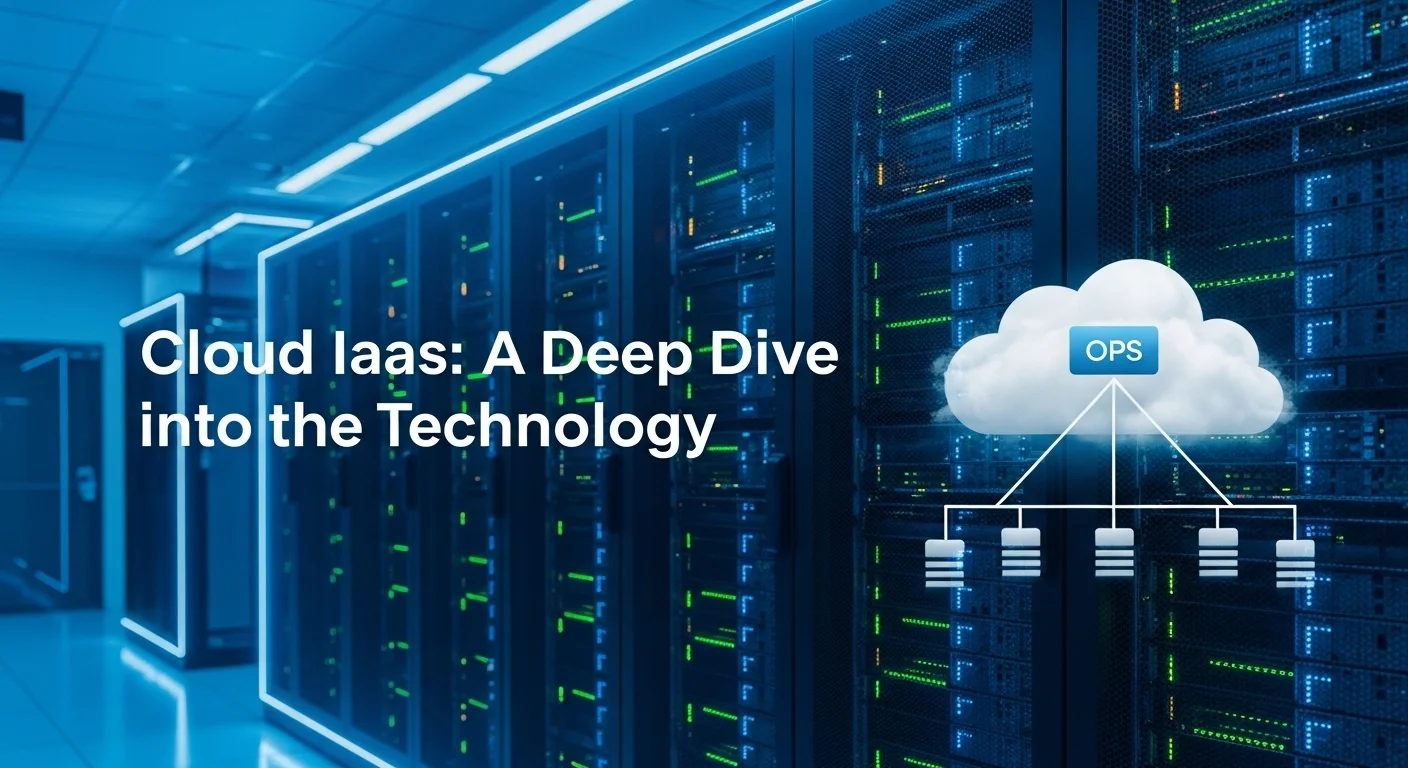
Complete guide to Cloud Iaas in Technology and Business Solutions
Navigating the world of Infrastructure as a Service (IaaS) requires more than just a basic understanding of its definition; it demands a deep dive into the technical methods, business strategies, and comparative strengths of the available solutions. For any organization looking to leverage the power of the cloud, a comprehensive guide to iaas cloud services is essential for making informed decisions that align with both technical requirements and business objectives. This guide will explore the technical intricacies of IaaS, compare the offerings of key providers like Google and Oracle, and outline business techniques for successful adoption, ensuring you can harness the full potential of this transformative technology.
Technical Methods and Architectural Patterns in IaaS
At its core, successfully implementing IaaS involves understanding and utilizing a set of key technical methods and architectural patterns. These are not just buzzwords; they are the practical approaches that enable the scalability, resilience, and efficiency that IaaS promises.
- Virtualization: This is the foundational technology of IaaS. [4] Hypervisors are used to abstract the physical hardware, allowing for the creation of multiple virtual machines (VMs) on a single physical server. Each VM runs its own operating system and applications in isolation. This maximizes hardware utilization and provides the flexibility to create diverse environments on demand.
- Infrastructure as Code (IaC): This is a revolutionary practice in IT management. Instead of manually configuring servers, storage, and networks through a web console, IaC allows you to define your entire infrastructure in configuration files. [5] Tools like Terraform, Ansible, and Google Cloud Deployment Manager read these files and automatically provision and manage the resources. This approach ensures consistency, repeatability, reduces human error, and makes infrastructure versionable, just like application code.
- Auto-Scaling and Load Balancing: To handle fluctuating demand, IaaS platforms use auto-scaling. You can define policies that automatically add or remove VMs based on metrics like CPU utilization or network traffic. [41] This ensures performance during peak times and saves money during lulls. Load balancers work in tandem, distributing incoming traffic across the pool of active VMs to prevent any single server from becoming a bottleneck and to improve availability.
- Microservices Architecture: While not exclusive to IaaS, this architectural style is a natural fit. Instead of building a single, monolithic application, a microservices approach breaks the application down into a collection of smaller, independent services. Each service can be developed, deployed, and scaled independently on its own set of IaaS resources. This enhances agility and resilience, as the failure of one service doesn't bring down the entire application.
- Hybrid and Multi-Cloud Strategies: Businesses are increasingly avoiding vendor lock-in and leveraging the best features from multiple providers. A hybrid cloud strategy combines on-premises infrastructure with a public iaas cloud. A multi-cloud strategy uses services from two or more public cloud providers (e.g., using Google Cloud IaaS for AI workloads and another provider for general compute). This requires careful planning around networking, data synchronization, and management.
A Comparative Look: Google Cloud IaaS vs. Oracle Cloud IaaS
While AWS and Azure are often seen as the market leaders, Google Cloud IaaS and Oracle Cloud IaaS offer compelling and distinct advantages that make them the right choice for specific business needs. A direct comparison reveals their unique strengths.
Google Cloud IaaS (iaas google cloud)
Google Cloud Platform (GCP) has built its IaaS offering on the same global infrastructure that powers Google Search, YouTube, and Gmail. [40] This heritage gives it some unique characteristics.
- Strengths:
- Networking: Google boasts one of the largest, most sophisticated private fiber optic networks in the world. This translates to high performance, low latency, and enhanced security for traffic moving between its data centers. [34]
- Live Migration: A standout feature of Google Compute Engine is live migration for VMs. Google can perform maintenance on the underlying hardware without requiring you to reboot your instances, leading to better uptime. [1]
- Data Analytics & AI/ML: GCP's IaaS is deeply integrated with its best-in-class data services like BigQuery and its AI Platform. [42] For businesses focused on big data, machine learning, and AI, iaas google cloud provides a seamless and powerful ecosystem.
- Pricing: Google has often been a leader in customer-friendly pricing, with per-second billing and sustained-use discounts that are automatically applied without long-term commitments. [40] - Ideal Use Cases: Cloud-native applications, data-intensive workloads, machine learning projects, containerized applications (via Google Kubernetes Engine), and businesses that prioritize global network performance. [45]
Oracle Cloud IaaS (oracle cloud iaas)
Oracle Cloud Infrastructure (OCI) was engineered as a 'second-generation' cloud, designed to address the shortcomings of earlier platforms, with a strong focus on enterprise-grade performance, security, and Oracle's own massive customer base. [19]
- Strengths:
- Performance for Enterprise Workloads: OCI's key differentiator is its performance, particularly for demanding enterprise applications and databases. It offers bare-metal servers (non-virtualized) that provide direct hardware access, and its network architecture is designed for predictable, low-latency performance. [15, 33]
- Oracle Database Optimization: Unsurprisingly, OCI is the best place to run Oracle databases. It offers unique deployments like the Autonomous Database and Exadata Cloud Service that are highly optimized and automated. [19]
- Security and Isolation: OCI was built with a security-first design philosophy. It provides off-box network virtualization, which isolates tenants and reduces the attack surface. It also offers a strong set of security services. [44]
- Cost Predictability: Oracle often competes aggressively on price, offering lower costs for compute and networking compared to competitors, with a focus on simple, predictable pricing models that appeal to enterprise budget planning. [40] - Ideal Use Cases: Large enterprises migrating existing Oracle applications (like E-Business Suite, PeopleSoft), high-performance computing (HPC), database-intensive applications, and businesses that require the raw power of bare-metal servers. [15, 33]
Business Techniques for Adopting IaaS Cloud Services
Migrating to or adopting IaaS is a significant undertaking that requires a clear business strategy. Simply 'lifting and shifting' applications without a plan often leads to high costs and missed opportunities.
- Start with a Cloud Readiness Assessment: Before migrating anything, analyze your existing applications, infrastructure, and operational processes. Identify which workloads are good candidates for the cloud. Not everything is a good fit. Categorize applications based on migration strategies: Rehost (lift-and-shift), Replatform (minor changes), Rearchitect (major changes for cloud-native benefits), or Retire.
- Develop a Strong Business Case: Go beyond simple cost savings. Your business case should include benefits like increased agility, faster time-to-market, improved resilience, and enabling innovation. Quantify these benefits where possible to get executive buy-in. Compare the Total Cost of Ownership (TCO) of your on-premises solution versus the projected costs of using an iaas cloud provider.
- Implement Robust Governance and Cost Management: The flexibility of IaaS can be a double-edged sword, leading to 'cloud sprawl' and uncontrolled spending. Establish clear governance policies from day one. Use tagging to allocate costs to specific projects or departments. [24] Set up budgets and alerts to monitor spending. Empower a central team or a Cloud Center of Excellence (CCoE) to oversee best practices for security, cost, and compliance.
- Invest in Skills and Training: Your team's skills need to evolve. They will need to understand cloud architecture, security in the cloud (which follows a shared responsibility model), and automation tools. Invest in training and certifications for your IT staff to ensure they can effectively manage and optimize the new environment.
- Prioritize Security and Compliance: Understand the shared responsibility model for your chosen provider (e.g., Google Cloud IaaS or Oracle Cloud IaaS). [7] The provider secures the cloud, but you are responsible for security *in* the cloud. This includes configuring firewalls, managing access controls (IAM), encrypting data, and ensuring your deployment meets any industry-specific compliance requirements (like HIPAA or PCI DSS). [5, 25]
By combining a solid understanding of the technical methods with a strategic approach to business adoption and a clear-eyed comparison of providers, organizations can successfully leverage the full spectrum of iaas cloud services. Whether the choice is the data-centric power of iaas google cloud or the enterprise-focused performance of oracle cloud iaas, the result is a more agile, resilient, and innovative technological foundation for the future.
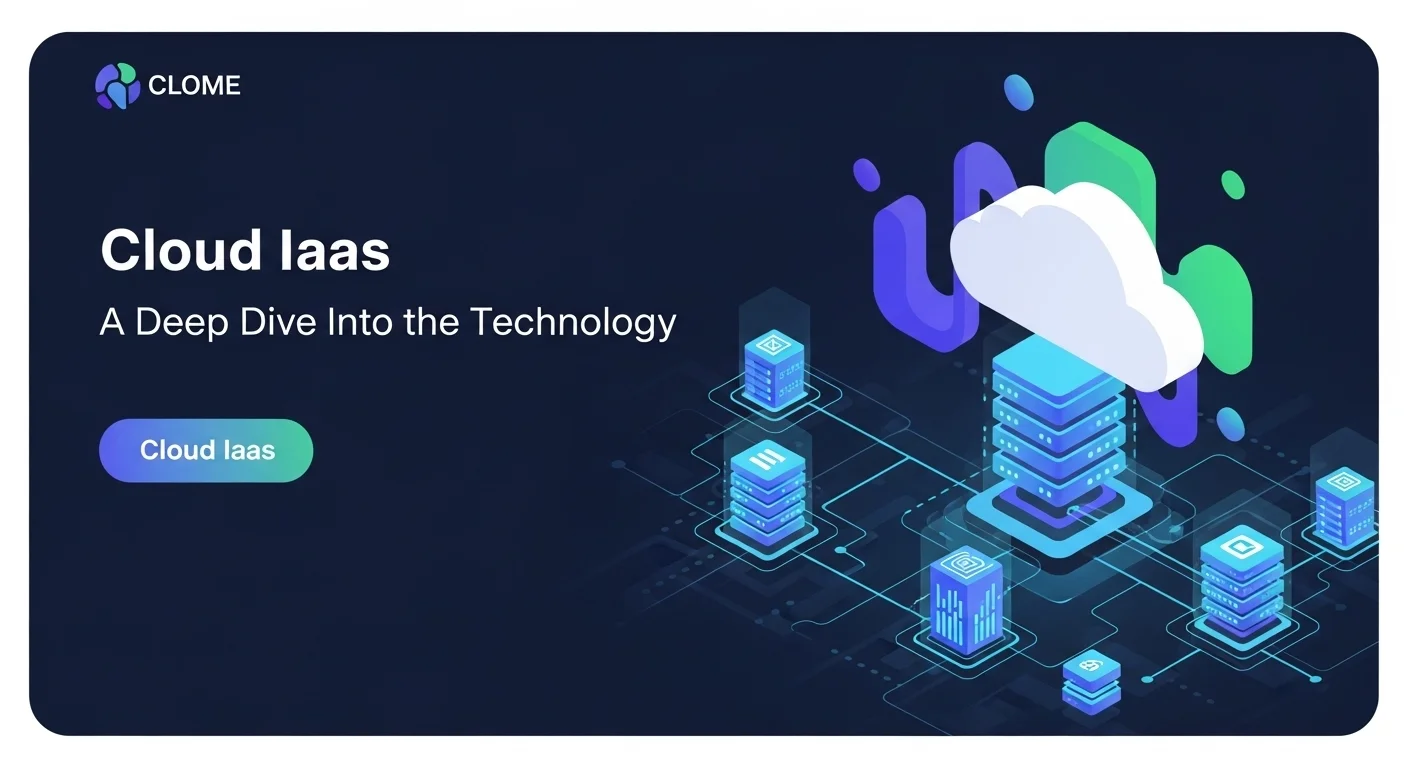
Tips and strategies for Cloud Iaas to improve your Technology experience
Adopting Infrastructure as a Service (IaaS) is the first step towards a more agile and scalable technology foundation. However, truly mastering the iaas cloud environment and maximizing its benefits requires a strategic approach focused on continuous optimization. Simply running virtual machines in the cloud as you would on-premises is a recipe for inefficiency and high costs. To elevate your technology experience, it's crucial to implement best practices for cost management, security, and performance. This section provides actionable tips and strategies, with a focus on tools and experiences related to providers like Google Cloud IaaS and Oracle Cloud IaaS, to ensure you are getting the most out of your investment.
Mastering Cost Optimization in the Cloud
Cloud costs can spiral out of control if not managed proactively. The pay-as-you-go model is a powerful advantage, but it demands a new level of financial discipline. [24] Here are key strategies to keep your cloud spending in check:
- Right-Sizing Your Instances: This is the most fundamental cost-saving practice. [47] Many organizations overprovision their VMs, paying for resources they don't use. Use the monitoring tools provided by your cloud vendor (like Google Cloud Monitoring or Oracle Cloud Infrastructure Monitoring) to analyze the actual CPU and memory utilization of your instances over time. Downsize oversized VMs to a more appropriate, and cheaper, instance type. For example, iaas google cloud offers 'right-sizing recommendations' directly in its console to automate this analysis.
- Leverage Commitment-Based Discounts: For workloads with predictable, long-term needs, paying on-demand prices is wasteful. All major providers offer significant discounts in exchange for a commitment. [24]
- Reserved Instances (RIs) / Savings Plans: You commit to using a certain amount of compute for a one- or three-year term and receive a discount of up to 70% or more. This is ideal for steady-state production applications.
- Sustained Use Discounts (SUDs): A feature pioneered by iaas google cloud, this automatically gives you discounts the longer you run a VM within a month, without requiring any upfront commitment. - Utilize Ephemeral and Spot VMs: For fault-tolerant, non-critical workloads like batch processing, data analysis, or development environments, Spot VMs (also known as Preemptible VMs in GCP) can offer massive savings—often up to 90% off on-demand prices. [41] The catch is that the provider can reclaim these instances with little notice. This is a powerful tool for cost reduction if your application is designed to handle such interruptions.
- Automate Shutdowns: Development and testing environments often don't need to run 24/7. Implement automated scripts or use built-in services (like Azure Automation or Google Cloud Scheduler) to shut down non-production resources outside of business hours and on weekends. [41] This simple practice can cut the cost of these environments by more than half.
- Implement Tagging and Alerts: A robust tagging strategy is essential for cost visibility. [24] Tag every resource with relevant information like project, department, and owner. This allows you to accurately track where your money is going. Couple this with budget alerts that notify you when spending for a specific project or service is about to exceed its budget, allowing you to take corrective action before it's too late.
Strengthening Your IaaS Security Posture
Security in the cloud is a shared responsibility. [7] While the provider secures the underlying infrastructure, you are responsible for securing your data, applications, and operating systems. A breach can be catastrophic, so a multi-layered security strategy is non-negotiable.
- Embrace the Principle of Least Privilege: This is the golden rule of access control. Use the Identity and Access Management (IAM) services of your provider to grant users and services only the permissions they absolutely need to perform their tasks, and nothing more. [5] Avoid using root or administrator accounts for daily operations. Regularly audit permissions and remove any that are no longer necessary.
- Secure Your Network: Do not expose your VMs directly to the public internet unless absolutely necessary. Use Virtual Private Clouds (VPCs) to create isolated networks. [1] Configure firewall rules (Security Groups in AWS, VPC Firewall Rules in GCP) to strictly control inbound and outbound traffic, only allowing access on specific ports from trusted IP addresses.
- Encrypt Everything: Data should be protected at all times. Encrypt data at rest (when it's stored on disk) and in transit (as it moves over the network). [25] All major iaas cloud services, including Google Cloud IaaS and Oracle Cloud IaaS, offer robust, managed encryption services. Use them. For highly sensitive data, consider managing your own encryption keys using services like Google Cloud KMS or Oracle Cloud Infrastructure Vault. [5]
- Patch and Harden Your Systems: You are responsible for patching the operating systems and software running on your VMs. [7, 29] Use automated patch management tools to ensure you are protected against known vulnerabilities. Additionally, 'harden' your OS images by disabling unnecessary services and ports to reduce the attack surface.
- Continuous Monitoring and Threat Detection: You can't protect against what you can't see. Use cloud-native security tools (like Google's Security Command Center or Azure Sentinel) to continuously monitor for misconfigurations, suspicious activity, and potential threats. [23] These tools can provide a centralized view of your security posture across all your iaas cloud services.
Optimizing Performance for a Superior Experience
Performance is key to a good user experience and operational efficiency. An underperforming application can lead to lost customers and revenue.
- Choose the Right Storage Tier: Not all data access patterns are the same. Using high-performance SSD-based storage for infrequently accessed archive data is a waste of money. Conversely, running a high-traffic database on slow, HDD-based storage will kill performance. [41] Understand the performance characteristics (IOPS, throughput) of the storage options offered by your provider (e.g., the difference between Persistent Disks and Cloud Storage in iaas google cloud) and match them to your workload's needs.
- Implement Caching and CDNs: To reduce latency for users and decrease the load on your servers, use caching strategies. A Content Delivery Network (CDN) caches static content (images, CSS, JavaScript) at edge locations around the world, closer to your users. For dynamic content, in-memory caches like Redis or Memcached can significantly speed up response times by reducing database queries.
- Leverage Autoscaling for Performance: Autoscaling isn't just for cost; it's a critical performance tool. By automatically adding instances during traffic spikes, you ensure that your application remains responsive and available under load. [41]
- Monitor Performance Metrics: Proactively monitor key performance indicators (KPIs) like CPU utilization, memory usage, disk I/O, and network latency. Set up alerts to be notified of performance degradation before it impacts users. Tools from providers like Oracle Cloud IaaS and others provide detailed dashboards to visualize these metrics.
By adopting these strategies, you can transform your use of Cloud IaaS from a simple infrastructure rental into a highly optimized, secure, and performant technology engine. The dynamic nature of the cloud means that optimization is not a one-time project, but an ongoing process of refinement. For more in-depth information and best practices, an excellent external resource is the Gartner IaaS glossary, which provides high-level definitions and links to further research on the topic.
Expert Reviews & Testimonials
Sarah Johnson, Business Owner ⭐⭐⭐
The information about Cloud Iaas is correct but I think they could add more practical examples for business owners like us.
Mike Chen, IT Consultant ⭐⭐⭐⭐
Useful article about Cloud Iaas. It helped me better understand the topic, although some concepts could be explained more simply.
Emma Davis, Tech Expert ⭐⭐⭐⭐⭐
Excellent article! Very comprehensive on Cloud Iaas. It helped me a lot for my specialization and I understood everything perfectly.


